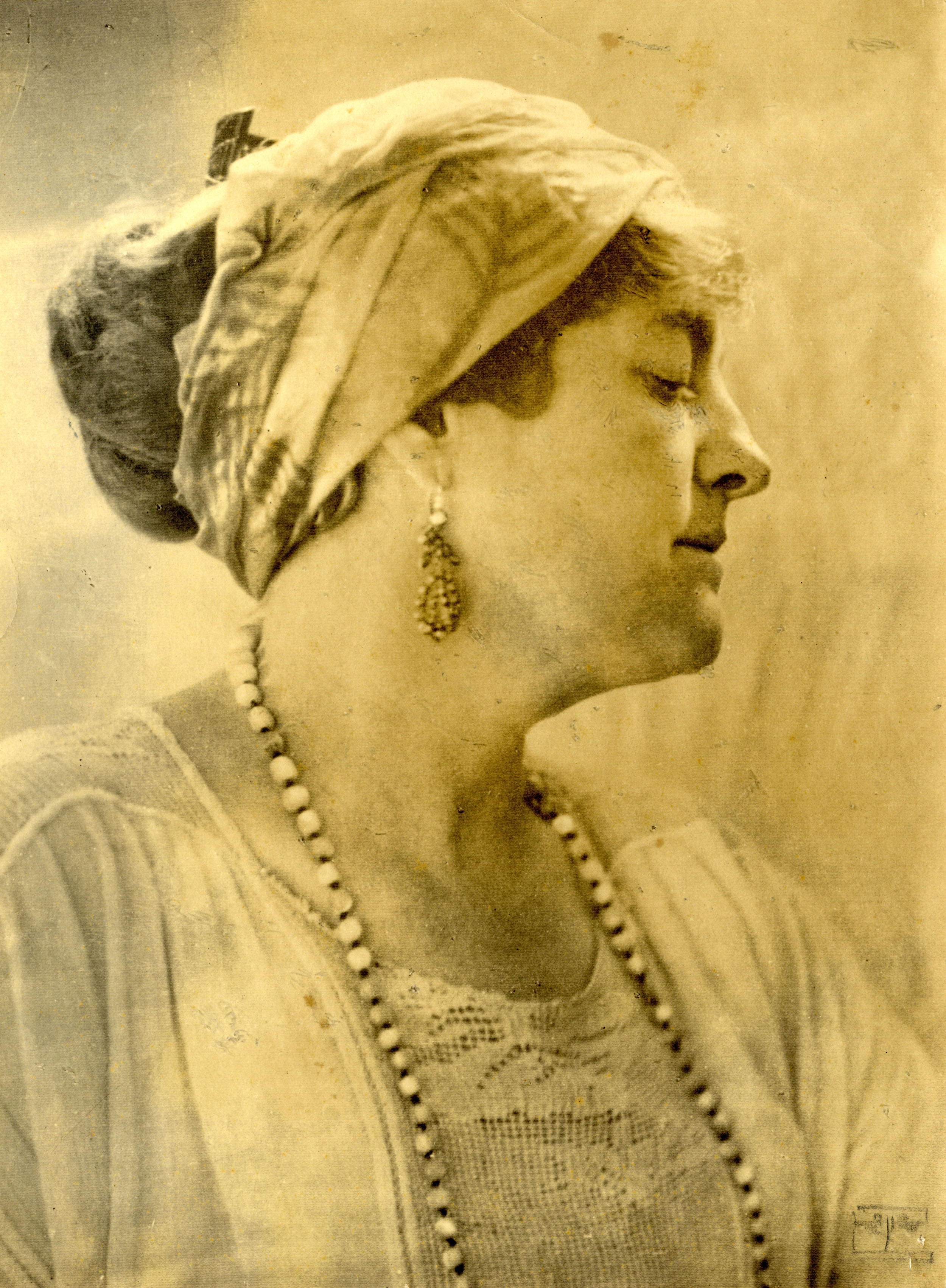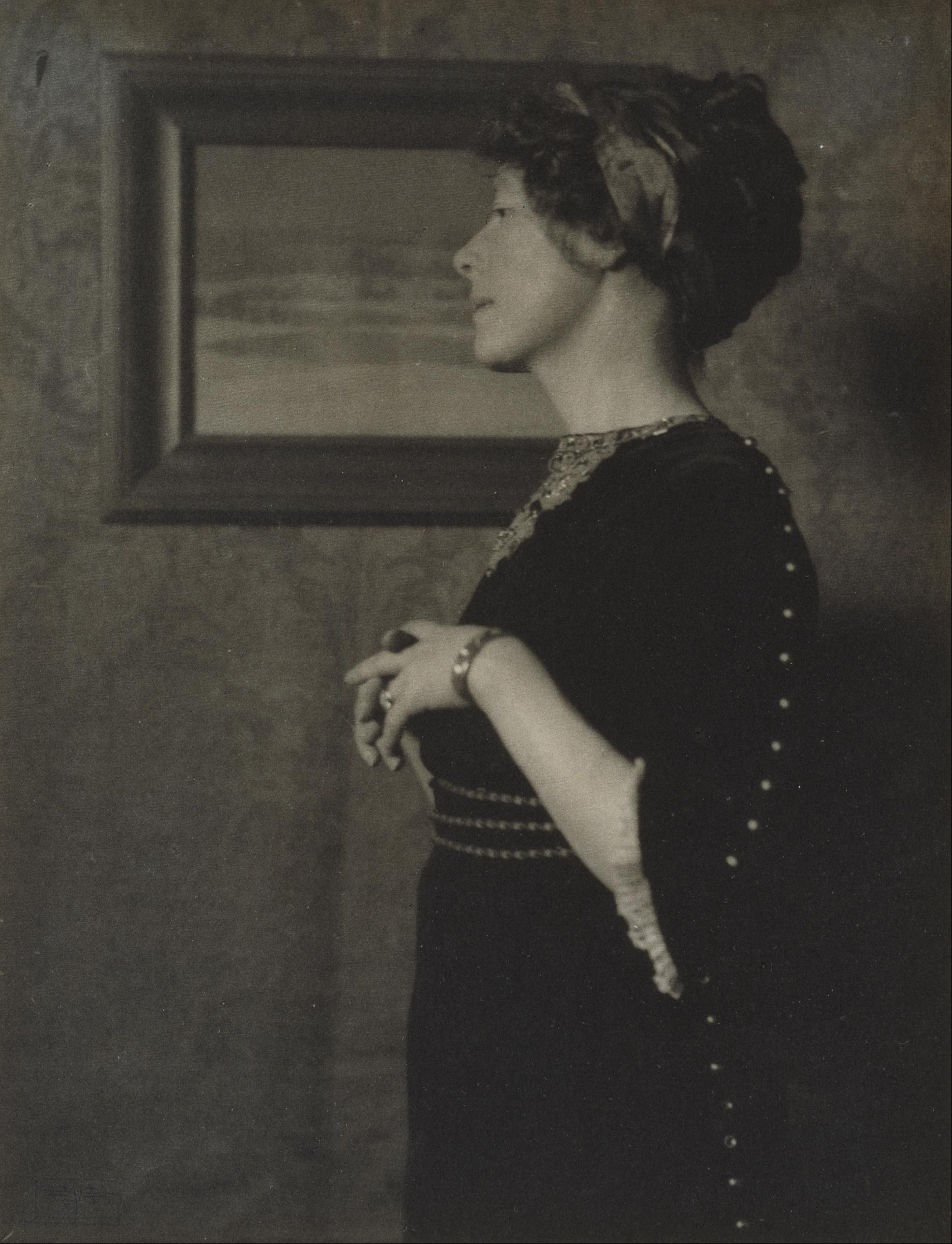Sometimes it is hard to believe why people have become famous. But it is as true the other way round. When Eva Lawrence Watson was born in 1867 nothing indicated the important role she was going to perform. She was just born in obscurity and would remain hidden until 16 years old when she enrolled in the Pennsylvania Academy of the Fine Arts in Philadelphia, where she studied under Thomas Eakins. She did watercolours and paintings, but it is unknown if she had any interest at all in photography. But she clearly made her mind up by the 1890's, she wanted to be a photographer.
Opening her own studio by 1897 she quickly became known for her expressive and pictorial style. Firmly believing in women’s future in photography: “There will be a new era, and women will fly into photography.” In 1898 she showed at the first Philadelphia Photographic Salon. Here she met with Alfred Stieglitz who was a judge there. And in 1900 she was a member of the jury herself. Being regarded on a par with the other members of the jury, who were Alfred Stieglitz, Gertrude Käsebier, Frank Eugene and Clarence H. White. She showed a record number of prints in a groundbreaking exhibition of American women photographers in Paris. But stated that she rather would not have her work being represented as 'women's work'. Wanting to be judged on the standard of workmanship, not on her sex. In 1901 she married Professor Martin Schütze.
In 1902 she suggested the idea of forming an association of independent and like-minded photographers to Stieglitz. They corresponded several times about this idea. And by the end of the year she had joined him as one of the founding members of the famous Photo-Secession. Between 1905 and 1910 her interest in painting was rekindled. Taking less and less photographs. And by 1920 no professional work appeared anymore. When she died in 1935 a memorial exhibition was held at the Renaissance Society (a non-collecting museum). At the exhibition none of her photographs were shown. Since then her photographic work was only shown at two other exhibitions. Some photographs were independently shown later. So it looks like that within her lifetime Eva went from unknown to celebrated around the globe back to virtually unknown again. Now why is it that the name Stieglitz remained firmly in the world of photography and Watson-Schütze has been almost forgotten? Her role certainly wasn't any less important.
Sometime between 1920 and 1924 Eva created an album of family portraits for the Stallforth family. The image of today was found in that album. It is of Estebena Risse (known as Adie). At this point in time Adie already was quite ill from stomach cancer. Giving the photo another layer. Was it the last time she was portrayed? It is currently unknown how Eva and Adie had met, perhaps it was at the summer retreat of Eva's at Byrdcliffe, New York. Adie had seen her sister die of cancer as well, so she must have known her future. On the photograph she is looking away, eyes downcast. The primary light-source comes from right-hand up. Casting strong shadows on the profile. The secondary light-source comes from below left. It is quite soft. Just picking out the ear and muscles in her neck. The squiggles on the right-hand bottom are Eva's signature.
- Erik


 Eva Watson-Schütze
Eva Watson-Schütze